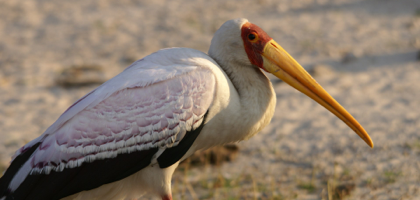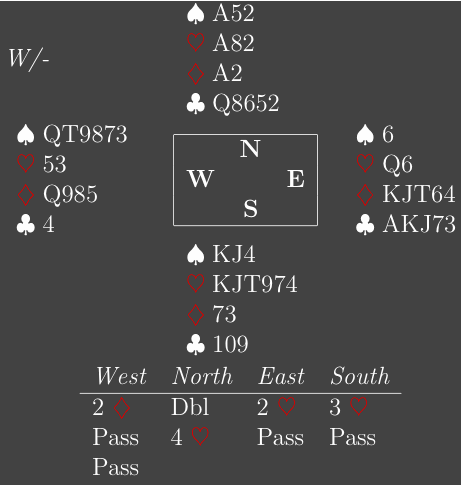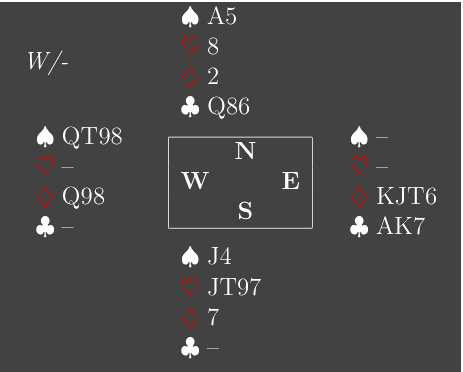
The late Victor Mollo would probably start this blog with “Curious hand, observed the Secretary Bird, both opponents can endplay themselves”. This was the hand

, from a practice match yesterday evening in de Denktank, by far the best place in Arnhem to play bridge.
2♦ was multicolored, usually a weak 2 in a major. Double by north 13-15 balanced or a strong hand. 2♥ pass or correct, probably not the best way to treat that situation but that is besides the point here. The rest of the auction speaks for itself.
West led the ♣4 and things look quite hopeless for declarer: 2 club losers, a diamond loser and the spade finesse is almost certainly off. Anyway, small from the dummy, ♣J, ♣9. East can see all the cards below the ♣4, so she knew this was a singleton and returned a club, small, ruff, small. East continued with a diamond to the ace. The contract looks a lot better now, the top clubs are with east and she is also marked with a singleton spade. 2 top trumps follow and things improved even further when the ♥Q shows up. Now the ♠K removing the only spade in the east hand, leaving this position:

The ♦7 was played and the opponents have a choice of who gets endplayed. If west wins, he can either return a diamond for a ruff and a sluff, or a spade which declarer will certainly let run to the jack. If east wins, she can also return a diamond for a ruff and a sluff. If she returns a top club, declarer ruffs, crosses to a spade and runs the ♣Q to set up the ♣8, with the ♥8 still there as an entry.
Note that it does not matter what east plays at trick 2, the ♣K has the same effect as long as declarer ruffs the 3rd round high, which is kind of obvious. Any other return allows declarer to draw trumps, concede a club and establish a trick with a ruffing finesse in clubs. Get your copy of Deep Finesse if you don’t believe me.
I didn’t make the last trick with the ♦7, but I do think that I’m entitled to a sip of the Hog’s whisky for this play.
